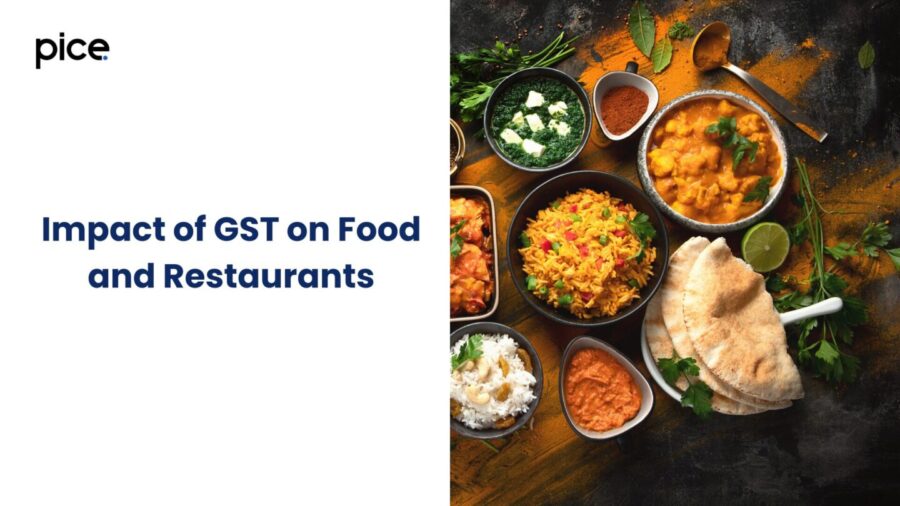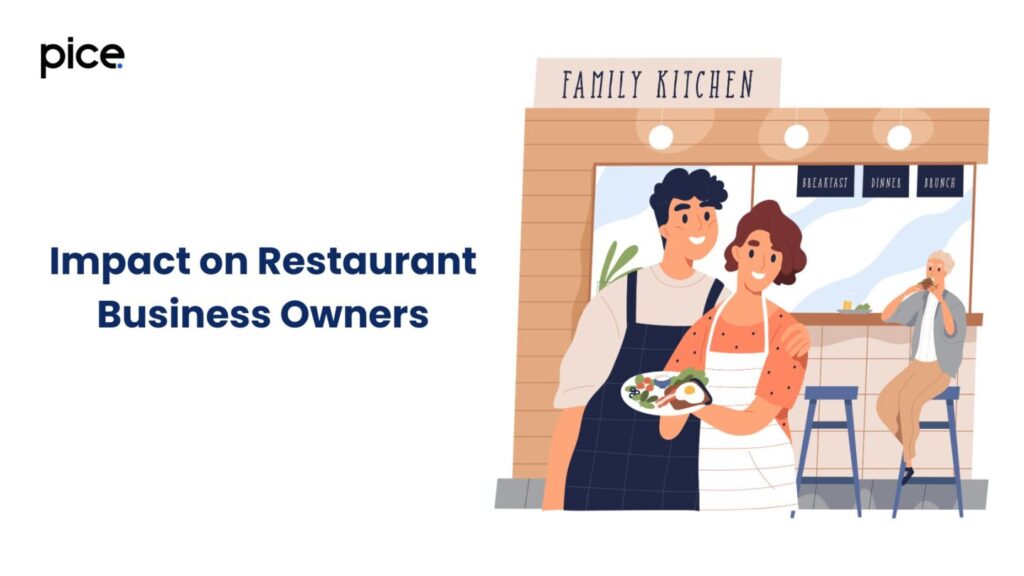Impact of GST on Food and Restaurants
- 27 Aug 24
- 11 mins

Impact of GST on Food and Restaurants
Key Takeaway
- The GST regime has simplified the tax structure for restaurants by replacing multiple indirect taxes with a unified tax.
- GST rates for restaurant services vary based on factors like air-conditioning and alcohol service, with non-AC restaurants taxed at 5% and AC restaurants at 18%.
- The introduction of GST has improved cash flow for restaurant owners through the seamless flow of input tax credit.
- Increased GST rates on certain services have led to higher dining costs for consumers, impacting overall demand.
- Proper documentation and compliance with GST regulations are essential for restaurant owners to avoid penalties and ensure smooth operations.
The introduction of the Goods and Services Tax (GST) has brought about a significant transformation in the Indian restaurant industry.
Analyzing a Pre-GST Restaurant Bill
There were a lot of different taxes that restaurants had to pay before GST was put in place. These included Service Tax, VAT, and the Krishi Kalyan Cess. Before GST, these taxes were often added to food bills, making them very expensive for customers.
A meal at an air-conditioned restaurant (AC restaurant) might be subject to a 15% service tax and a value-added tax (VAT) that ranges from 5% to 20%, based on the state. It was hard for both diner owners and customers to understand the different tax parts because the system was so complicated.
When taxes were set up before GST, restaurant owners often had to pay more because they had to keep track of various tax registrations and follow different rules. Under the old tax system, they couldn't claim input tax credits for different taxes at the same time, so this also affected those claims. For example, tax credits on raw products could not be used to lower the amount of service tax that was due.
In addition, tax rates varied a lot between states before GST, which caused food prices to be different. Separate restaurants, five-star hotels, and outdoor food services all had different tax effects, which made things even more complicated. Because taxes were not always the same, the food and beverage services business often wasn't working as well as it could.
GST Regulations for Restaurants
When GST was put in place, it changed the tax situation for restaurants in a big way. The GST rules were meant to make taxes easier to understand by getting rid of several indirect taxes and replacing them with a single, uniform tax. Under the GST system, restaurant services are put into groups based on the type of service they provide and are charged accordingly.
💡If you want to pay your GST with Credit Card, then download Pice Business Payment App. Pice is the one stop app for all paying all your business expenses.
The GST rates that restaurants have to pay depend on whether they have air conditioning or serve alcohol. As an example, restaurants that aren't AC are charged a 5% GST rate, while restaurants that are AC and serve booze are charged an 18% GST rate. Small restaurant owners with a turnover of up to Rs. 1.5 crore can pay a flat tax rate of 5% under the composition plan of GST. This makes it easier for them to follow the rules.
Restaurant owners must follow many GST rules, such as sending GST-compliant invoices, keeping accurate records of taxable goods, and sending in regular GST returns. For businesses to comply with GST, they need to know the applicable GST rate, keep thorough records, and make sure they file their returns on time to avoid penalties.
The GST system also has rules for input tax credit, which lets restaurant owners get credit for the GST they paid on things like services, capital goods, and raw materials. This lowers the general tax burden and makes money flow better.
GST Rates on Restaurant Services
The GST rates on restaurant services are structured to provide clarity and uniformity across the industry. The rate of GST depends on the type of restaurant and the services offered. As mentioned earlier, non-AC restaurants are subject to a GST rate of 5%, while AC restaurants and those serving alcoholic beverages attract a higher rate of 18%.
For restaurants located within hotels where the room tariff is Rs. 7,500 or more, the applicable GST rate is 18%. This ensures that luxury dining experiences are taxed at a higher rate compared to regular dining. The GST on food items served in restaurants also varies, with different rates for fresh fruits, vegetables, cocoa products, and other taxable supplies.
Outdoor catering services attract a GST rate of 18%, which is similar to the rate for AC restaurants. This includes services provided for events, indoor functions, and contractual agreements. The GST compliance requirements for these services include maintaining detailed records of sales, input credits, and ensuring proper documentation.
The GST regime also differentiates between services provided by standalone restaurants and those within hotels. For example, services in hotels with a room tariff below Rs. 7,500 are taxed at 5%, while those above this threshold attract a rate of 18%. This distinction helps in creating a fair tax structure for different types of food service providers.
Impact of GST on Restaurant and Food Items
There have been some good and some bad effects on restaurants and food since GST was put in place. On the one hand, the uniform tax system has made paying taxes easier, which means restaurant owners don't have to do as much paperwork. On the other hand, buyers have had to pay more for some services since GST rates went up.
For example, the GST on fruits and veggies that have been preserved, fresh fruits, and leguminous vegetables is not very high, which makes these things cheaper. But the higher GST rates on non-vegetarian foods, fizzy drinks, and alcoholic drinks have made it more expensive for people to eat out.
One good thing about GST is that input tax credits have been flowing more smoothly, which has helped restaurant owners' cash flow. They can now get a tax credit for the GST they paid on goods, services, and capital equipment. This lowers their total tax bill. This has also made people more likely to follow the rules and cut down on tax evasion in the food business.
Customers have to pay more for some services, though, because the GST rates on those services have gone up. The GST on food served in AC restaurants and bars that serve booze is higher, which makes meals more expensive. This has also changed the overall desire for eating out, because people are more aware of how much it costs.
Impact on Restaurant Business Owners

For restaurant business owners, the introduction of GST has brought about both opportunities and challenges. The simplified tax structure and the ability to claim input tax credit have been positive aspects, reducing the cost of compliance and improving cash flow.
However, the increased GST rates on certain services have posed challenges, particularly for restaurants serving alcoholic beverages and those located in five-star hotels. These businesses face a higher tax burden, impacting their profitability and pricing strategies.
The cost of compliance has also increased, with restaurant owners needing to maintain detailed records, file regular GST returns, and ensure proper documentation. This requires investment in accounting software, hiring tax professionals, and training staff on GST regulations.
Despite these challenges, the GST regime has created a more transparent and uniform tax structure for the restaurant industry. The positive impact includes reduced tax evasion, better compliance, and a level playing field for all types of food service providers.
Required Documents for GST Registration of Restaurants
Restaurant owners need to show a number of papers in order to sign up for GST. Some of these are the business's PAN card, proof that it is registered, and proof that the owner is who they say they are. A digital signature is also needed, along with proof of the business location and bank account information.
In order to register for GST, restaurant owners also have to give information about their business, such as the types of food and drinks they serve. This helps figure out the correct GST rate and makes sure that the services are properly classified.
The partnership contract or the Memorandum and Articles of Association (MOA) for companies and partnership firms are also important papers. If you are a sole owner, you need to show your Aadhaar card and bank information.
The GST filing process goes smoothly and without any problems if you have the right paperwork. It also helps keep you in line with GST rules and keeps you from getting fined for not following them.
GST Registration Procedure for Restaurants
The GST registration procedure for restaurants involves several steps. First, restaurant owners need to visit the GST portal and create a user ID and password. After logging in, they need to fill out the GST registration application form, providing all the required details and documents.
The application form requires information about the business, including the name, address, and type of services offered. Restaurant owners also need to provide details of the authorized signatory, bank account information, and the HSN codes for the goods and services provided.
Once the application is submitted, it undergoes verification by the GST authorities. If all the details are correct and the documents are in order, the GST registration certificate is issued. This certificate includes the GSTIN (Goods and Services Tax Identification Number), which is essential for all future GST-related transactions.
The registration process also involves obtaining an E-Way Bill for the movement of goods, if applicable. This ensures that the transportation of goods complies with GST regulations and avoids penalties.
Proper GST registration is crucial for restaurant owners to ensure compliance, claim input tax credits, and streamline their business operations. It also helps in building credibility with customers and suppliers, ensuring smooth and efficient business processes.
In conclusion, the impact of GST on the food and restaurant industry has been significant, bringing both challenges and opportunities. The simplified tax structure, input tax credit mechanism, and uniform GST rates have made compliance easier for restaurant owners. However, the increased GST rates on certain services have posed challenges, impacting costs and pricing strategies. Overall, GST has created a more transparent and efficient tax regime for the restaurant industry, benefiting both business owners and consumers.
 By
By 

















